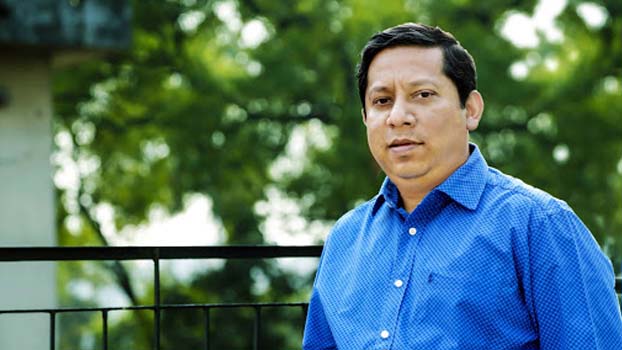Where does Bangladesh stand on its 49th Victory Day?

As the nation celebrates 49th anniversary of victory, the question most frequently asked is where does Bangladesh stand today? The journey was not at all an easy one. Bangabandhu’s Bangladesh started from scratch. Very little had been contributed to the economy and infrastructure of the then East Pakistan during the 24 years of Pakistani occupation.
Whatever was there was courtesy to the British colonial rulers and even those were systematically destroyed by the occupying Pakistani army during the violent nine months of 71. Bangabandhu was therefore left with perhaps the toughest challenge to put the newly independent country back on track, a country labeled by Henry Kissinger as ‘the bottomless basket’.
In his brief tenure of little more than three years, which was abruptly terminated with his assassination on August 15, 1975, Bangabandhu did miracles. The country attained a per capita income of USD 350 plus, which in 1977 under the rule of General Zia was reduced to merely USD 200 plus.
In 1975, when Bangabandhu was assassinated, the GDP of Bangladesh was 7 percent. The country had to wait for decades to achieve the same figure again, only after Sheikh Hasina resumed office.
It is however an unfortunate reality that 15 August did happen. We know that the dark night of 15 August was not only the outcome of adventure by a group of misguided military men. There was deep routed domestic, backed by international, conspiracy behind the events that led to 15 August.
The current Law and Parliamentary Affairs Minister has reassured the nation and the law makers during the special session of JatiyaSangsad on ‘MujibBorsho’ that an independent commission will soon be constituted to expose these dark chapters of our history. That is a different issue all together. However what is relevant here is that the groundwork was done to set the stage for staging 15 August, which perhaps have been difficult had we not been stripped off intellectually.
It will therefore be no exaggeration to say that one crucial element in this chemistry was perhaps sowed in the blood soaked brickfields of Rayerbazar on December 14 and 15 of 1971, just before the dawn that witnessed the dawn of independent Bangladesh. The brutal assassination of the nation’s intellectuals by the local collaborators of the Pakistani regime backed by the Pakistanjunta, was no isolated accident. It was part of a very well chalked out plan to deprive the newly independent nation of intellect and guidance, a plot that attained it’s target 100 percent.
Despite Pakistani oppression of 24 years and crimes against humanity committed by the Pakistan army in occupied Bangladesh in 1971 and more importantly, despite the visible economic and infrastructural achievements by Bangabandhu, within such a short span, 15 August did take place. It would perhaps not have been so easy to stage 15 August, had these intellectual minds not been removed from the scenario.
Bangladesh is paying the priceof consequences of the fallen martyred intellectuals as of today. As we celebrate 49thVictory Day of Bangladesh, we are faced with a confusional state where on one hand a group of religious fanatics are persuading hate campaign against Bangabandhu, which is being countered by a social movement initially led by the civil society with the pro-liberation political forces joining subsequently. But at the same time, it is also true that there is a section in our society confused with the interpretation of‘sculpture and statue’ and what is worrisome is that this confused section includes many who claim to be secular and pro-liberation. The evil intention behind eliminating the intellectuals in 1971 was to deprive Bangladesh of intellect and intellectuals has been greatly achieved.
As we celebrate ‘Mujib Borsho’ and prepare to celebrate the Golden Jubilee of birth of independent Bangladesh, the question that logically comes to mind is where do we stand at this historical juncture? 16 December 1971 was earned at the cost of 3 million lives not only to ensure the political freedom of the Bengali people, it also meant economic freedom, which is visible in today’s Bangladesh. But 16 December also meant a Bangladesh in the spirit of secularism, which is yet to be achieved, as is evident once again from the recent debate concerning sculptures.
When Awami Muslim League was formed Bangabandhu wrote in his memoires that he would have been happier had the word ‘Muslim’ not been included in party’s name. Being a truly secular politician and a practicing Muslim he believed that religion was personal and not a state matter. But it was unavoidable given the prevailing environment in Bangladesh in the late 1940s. It so seems that as today’s Bangladesh is marching boldly ahead to become a developed nation before we celebrate our diamond jubilee, on intellectual aspects, we have reverted back to where we stood in 1948. If we envisage an independent Bangladesh independent in all perspectives, it is now high time that we concentrate solidifying ideologically and intellectually as otherwise, the developed Bangladesh of 2041 will be standing on highly volatile grounds.
Personally I am an optimist and I like to learn from history. It took Bangabandhu around the decade to give Awami League it’s today’s identity. I therefore, like to believe that consolidated efforts by the secular and pro-liberation forces in today’s Bangladesh under the leadership of SheikhHasinawill not take more than a decade to dump the evil ideologies of the religious fanatics once and for all in the Buriganga.
Professor Dr. Mamun Al Mahtab (Shwapnil) is Chairman, Department of Hepatology, Bangabandhu Sheikh Mujib Medical University& Member Secretary, Sampritee Bangladesh


